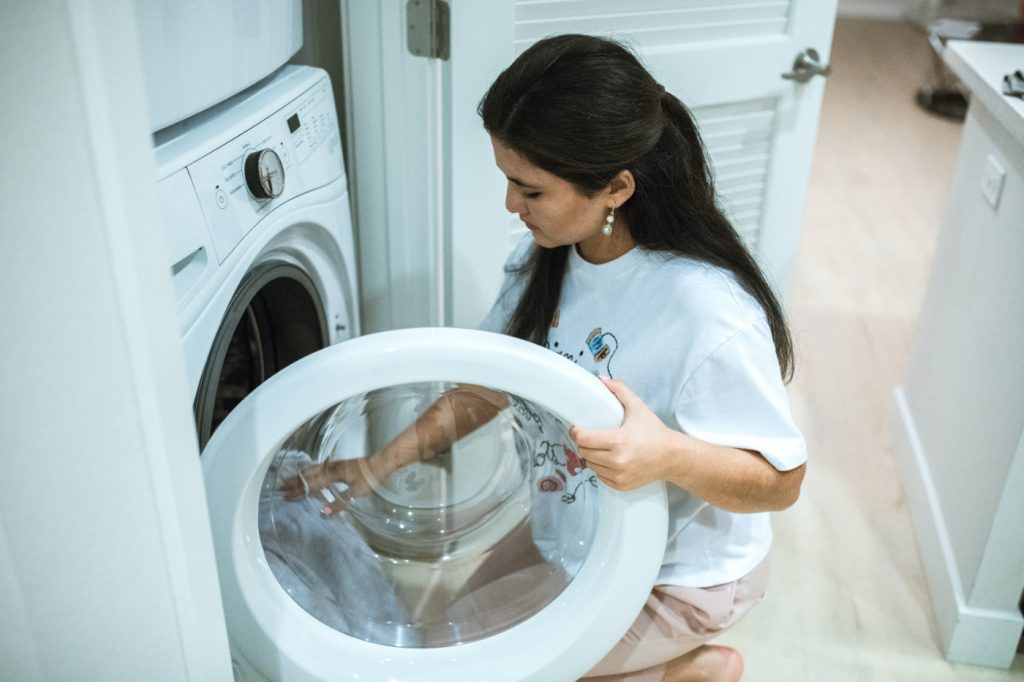
Understanding The Cost Of Dry Cleaning A Suit
Dry Cleaning , Fabricare Center Blog
Have you ever wondered why the cost of dry cleaning a suit can rival a meal at your favorite restaurant? You’re not alone; we’ve pondered this very question. The cost of dry cleaning a suit can vary widely, from a modest $10 to an eyebrow-raising $50! In this blog post, we aim to unravel this mystery and illuminate the factors that contribute to this price range. Furthermore, we’ll equip you with savvy tips to maintain your suits’ impeccable appearance without emptying your wallet. If you’re prepared to embark on this journey into the realm of money-saving secrets, let’s navigate these uncharted waters together!
Key Takeaways
- Dry cleaning a suit can cost from $10 to $50 depending on many factors.
- Location, type of suit, fabric used, existing stains and quicker return times all impact the price of dry cleaning.
- Check different cleaners for prices, read online reviews and ratings and look out for discounts and promotions.
- Save money by following care instructions closely, opting for spot cleaning or home kits where possible.
Understanding The Cost Of Dry Cleaning A Suit: What You Need To Know
Factors Affecting the Cost of Dry Cleaning a Suit
The cost of dry cleaning a suit can vary significantly depending on several factors. One of the primary influencers is the suit’s location, with urban areas generally commanding higher prices. Additionally, the type of suit you have also plays a pivotal role; for example, a two-piece suit tends to be more cost-effective compared to a three-piece ensemble.
The choice of fabric also plays a crucial role in determining the price. Suits made from delicate materials such as silk or wool typically incur higher costs than those made from polyester. Furthermore, if your suit has pre-existing stains, you should expect additional charges for stain removal.
It’s worth noting that opting for urgent dry cleaning services often results in higher prices. Moreover, some dry cleaners may have additional fees and offer services like pick-up and delivery, which can impact the final bill. Be sure to inquire about these extra services when choosing a dry cleaning provider.
Location
Regional variations have a significant impact on the cost of dry cleaning a suit. Suit dry cleaning prices can vary significantly depending on the location due to local market conditions and demand.
For instance, in bustling metropolitan areas where time is at a premium, individuals often find themselves paying higher rates for these services. This is primarily because there are limited alternatives available, and businesses incur high overhead costs. On the contrary, dry cleaners situated in smaller towns or suburban areas tend to charge less due to lower operational expenses and competitive pricing.
Understanding the geographic influence on suit dry cleaning expenses provides valuable insights into the factors that contribute to the costs we incur. This highlights that it’s not just the material composition of the suit but also the geographical location that plays a tangible role in determining suit dry cleaning costs.
Type of Suit
The choice of suit greatly impacts dry cleaning expenses. For example, a basic two-piece wool suit will generally incur lower cleaning costs compared to a three-piece tuxedo adorned with satin details.
More intricate suits often demand specialized care, along with additional time and labor to ensure a thorough and proper cleaning, resulting in higher expenses.
Furthermore, embellishments like sequins or intricate embroidery on the suit factor into the overall dry cleaning fees. These ornamental elements require delicate handling to avoid any harm during the cleaning procedure, consequently contributing to an elevation in the expense of preserving your sartorial refinement.
Fabric Type
The type of fabric used in your suit can significantly impact the cost of dry cleaning. Suits made from wool and silk typically incur higher cleaning costs compared to those crafted from synthetic materials. This price disparity is primarily attributable to the delicate nature of wool and silk fabrics.
The elevated cost is a result of the specialized care and products required for handling these materials. Consequently, it’s imperative to be aware of this potential expense in advance, as dry cleaning charges for suits can vary significantly based on the fabric type.
Pre-existing Stains
Factors such as pre-existing stains on your suit can significantly impact the cost of dry cleaning. Tough stains, like those caused by makeup, mustard, and wine on fabrics, necessitate extensive treatment to restore the garment to its original state.
Accumulated dirt over time is another formidable adversary that can lead to increased fees, as it demands a more thorough cleaning process. The complexity of stain removal maneuvers depends greatly on the nature of the stain itself—some stains are more stubborn than others and may require multiple treatments.
Consequently, when we entrust our suits with these challenging-to-treat stains to professional cleaners, it is expected that the costs of fabric care will rise due to these factors.
Timeframe for Return
Consider the return timeframe a pivotal factor influencing suit dry cleaning costs. Most cleaners offer standard service times, with expedited options incurring extra charges. Plan ahead to avoid rush fees, which can significantly raise expenses.
Frequent rush orders may harm fabric longevity, subjecting it to excessive cleaning. Allowing sufficient lead time not only saves money but also enables better stain removal and prolongs the garment’s life.
Recognize that delicate fabrics and designer suits require specialized attention and more time. Quality work takes time, affecting the overall dry cleaning cost.
Some factors influencing suit dry cleaning prices are beyond our control. Strategic planning can lead to immediate savings and long-term preservation, a crucial consideration for expensive formal wear like suits.
Adjusting expectations regarding timelines effectively manages expenses while preserving clothing.
Additional Services and Fees
Most dry cleaners offer more than just basic cleaning for your suit. They provide various additional services that can affect the overall cost. Stain treatment is typically charged separately, ranging from $1 to $10 per item. Some cleaners may charge extra for pressing, but look for package deals if you have multiple items.
Specialized cleaning, like leather or fur, tends to cost more due to the specialized care required. Rush or same-day cleaning services come at a higher price. If you need alterations or repairs, many dry cleaners offer these services but expect them to increase your bill. It’s essential to consider these extra charges to avoid surprises when you pick up your suit.
How to Research and Compare Dry Cleaning Prices for Suits
Exploring various dry cleaning establishments and comparing their pricing is a smart choice. Utilize online platforms to access reviews and ratings, which can help you assess the level of service offered by these cleaners.
Don’t hesitate to inquire about any ongoing discounts or promotional deals, as this can substantially lower your expenses. It’s commendable to put in some effort when engaging in comparative shopping for suit dry cleaning services.
Shop Around and Compare Prices
We’re all aware that dry cleaning prices can vary significantly from one service provider to another. Engaging in comparative shopping is essential if you’re looking for the highest quality service at a reasonable price. Don’t restrict yourself to just one or two options; take the time to visit multiple local dry cleaners and inquire about their rates for suit cleaning.
Online platforms also offer a convenient way to compare prices without leaving the comfort of your home. The typical cost of suit dry cleaning can range from $10 to $35, with additional charges potentially applying for supplementary services such as clothing alterations.
Securing a good deal demands diligence in researching the prevailing rates at various establishments. It is only through comparison that we discern whether something is costly or surprisingly affordable! If you’re perplexed by pricing disparities, seek clarification regarding what each service includes – does it justify the additional expense or not? However, always bear in mind not to compromise quality for the sake of cost – the longevity of your fine suits depends on it! So, embark on your search today; discover those top-notch yet budget-friendly dry cleaning services!
Check Online Reviews and Ratings
Remember, affordability doesn’t always equate to quality. We strongly recommend consulting online reviews and ratings when comparing prices for suit dry cleaning. Numerous websites compile customer testimonials, offering a valuable resource to aid your decision-making process.
It’s prudent to closely scrutinize these assessments, as they can indicate which dry cleaners provide the best value for their services. These platforms often rank businesses based on customer feedback regarding pricing, service quality, and overall satisfaction.
However, don’t fixate solely on star ratings; invest time in reading comments from past customers as well. These comments may unveil valuable insights not immediately apparent from numerical scores alone. In any industry, including suit dry cleaning, online reputation is paramount, so companies consistently receiving high reviews should be at the forefront of your consideration.
Inquire About Discounts and Promotions
In our quest to discover exceptional deals for suit cleaning, let’s not underestimate the impact of discounts and promotions. Most dry cleaners excel in this area, frequently rolling out sales, markdowns, and promotional offers. Be vigilant for these outstanding opportunities; seizing them promptly can be highly advantageous.
Our second tip pertains to the pursuit of exclusive deals, such as enticing loyalty programs and seasonal specials offered by many companies. Enrolling in these programs often translates into substantial savings, courtesy of discounted rates or coupon codes tailored for loyal patrons.
Moreover, companies often unveil time-limited offers during specific seasons, substantially reducing their prices. It’s wise to capitalize on these occasions to achieve noteworthy savings.
Tips for Saving Money on Dry Cleaning Suits
Discover strategies to reduce your dry cleaning costs, ranging from following garment care instructions diligently, considering spot cleaning or using at-home dry cleaning kits, to maximizing the benefits of loyalty discounts.
Interested in gaining further insights? Keep reading!
Follow Care Instructions to Minimize Trips to the Dry Cleaner
While dry cleaning provides a convenient solution for maintaining your suit, it’s crucial not to rely on this service excessively. By faithfully following care instructions, you can greatly reduce the necessity for frequent dry cleanings.
These labels reveal essential information about the fabric and recommended cleaning methods, enabling you to preserve the longevity and freshness of your garments without frequently resorting to professional services. From gently steaming at home to spot-treating minor stains, you’ll discover numerous tips within the care instructions that will help keep your suits looking sharp while also saving you from unnecessary dry cleaning expenses.
Opt for Spot Cleaning or Steaming for Minor Stains or Odors
Spot cleaning and steaming are excellent solutions for addressing minor stains or odors on suits. Both methods empower us to address blemishes or odor concerns independently, presenting a cost-effective alternative to the expense of professional dry cleaning services.
It’s worth noting that mild soiling can be effortlessly removed through spot treatment. This involves using fabric-safe stain removers to restore the material to its original pristine condition. For suits in need of a refresh without undergoing a full wash cycle, steam offers undeniable benefits.
The high-temperature vapor delves deep into the fabric’s fibers, effectively eliminating both ingrained odors and bacteria, all while effortlessly smoothing out any wrinkles. However, it’s crucial to perform a test on an inconspicuous area first, as certain materials may not react well to the intense heat generated by the steam.
So, when your suit isn’t heavily soiled but could use some care, reach for your trusty hand-held steamer!
Seek Out Dry Cleaners With Loyalty Programs or Frequent Customer Discounts
You can notice substantial savings by selecting dry cleaners that offer customer loyalty programs and frequent visitor discounts. These budget-friendly options are gaining popularity as more businesses recognize the significance of retaining loyal customers and attracting new ones.
Take Cleantie, for example, which tempts you with a generous $10 reward for downloading their app. This not only puts money back in your pocket when you get your suits dry cleaned but also contributes to their increased patronage – a win-win situation for all! Moreover, customer loyalty benefits can also manifest in the form of referral discounts. When you refer a new customer, both you and your friend enjoy reduced prices.
Therefore, it’s always worthwhile to explore these money-saving tips for dry cleaning your suits before planning your next visit!
Conclusion – Understanding The Cost Of Dry Cleaning A Suit
In essence, the price of dry cleaning a suit hinges on factors such as location, suit complexity, fabric type, stain conditions, and urgency. To economize, shop around, consult online reviews, and leverage discounts. Moreover, adopting meticulous care practices, including spot cleaning and utilizing loyalty programs, can preserve your suits’ quality without burdening your budget.
In the world of dry cleaning, savvy consumers can navigate the varying costs while ensuring their suits remain in impeccable condition. By understanding the factors that influence pricing and implementing cost-saving strategies, you can confidently manage your suit care expenses and keep your attire looking sharp.





